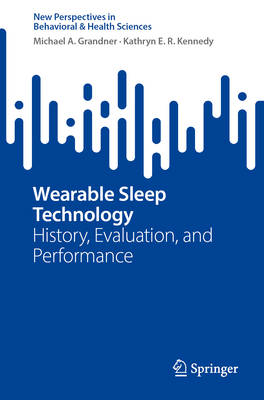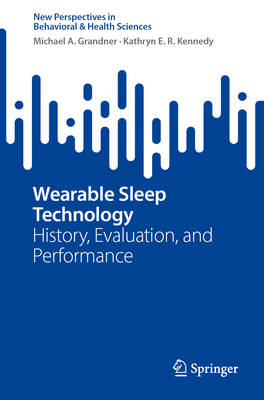
- Afhalen na 1 uur in een winkel met voorraad
- Gratis thuislevering in België vanaf € 30
- Ruim aanbod met 7 miljoen producten
- Afhalen na 1 uur in een winkel met voorraad
- Gratis thuislevering in België vanaf € 30
- Ruim aanbod met 7 miljoen producten
Zoeken
Wearable Sleep Technology
History, Evaluation, and Performance
Michael A Grandner, Kathryn E R Kennedy
€ 76,45
+ 152 punten
Omschrijving
This book is about wearable sleep technology. Sleep assessment technologies, or "sleep trackers", that can be used outside of the laboratory are becoming increasingly popular. They are utilized in scientific research, among behavioral sleep medicine clinicians, and by members of the general public who are interested in learning more about their sleep. There are few guidelines currently available to help users discern which device is most suitable for their needs. Bold marketing claims often suggest that devices are more accurate than they are. By understanding the history of how these devices were developed, the limitations of the current proxy measures of sleep, and the inherent bias in validation studies of the most popular devices used today, readers can learn about what to realistically expect from device performance. This book comprehensively explains how sleep trackers work, how they can be evaluated by users, and how they can be used in practice.
Specificaties
Betrokkenen
- Auteur(s):
- Uitgeverij:
Inhoud
- Aantal bladzijden:
- 211
- Taal:
- Engels
- Reeks:
Eigenschappen
- Productcode (EAN):
- 9789819666423
- Verschijningsdatum:
- 30/12/2025
- Uitvoering:
- Paperback
- Formaat:
- Trade paperback (VS)
- Afmetingen:
- 155 mm x 235 mm

Alleen bij Standaard Boekhandel
+ 152 punten op je klantenkaart van Standaard Boekhandel
Beoordelingen
We publiceren alleen reviews die voldoen aan de voorwaarden voor reviews. Bekijk onze voorwaarden voor reviews.








